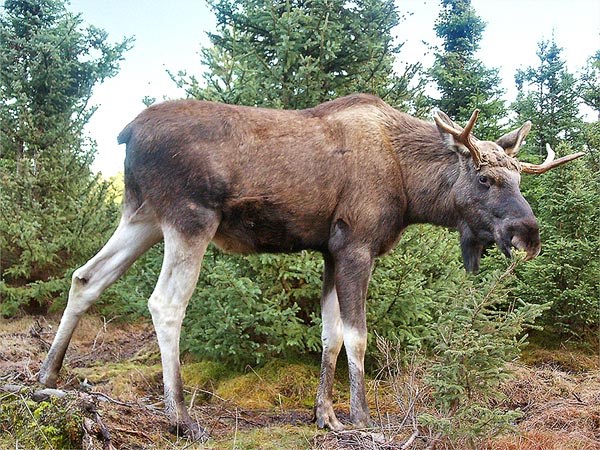Contact
Anne-Marie Dalin, Professor
Department of Clinical Sciences, SLU
anne-marie.dalin@slu.se, 018-67 19 48

Both Rickettsia helvetica and Anaplasma phagocytophilum are common in Ixodes ricinus ticks in Sweden. Knowledge is limited regarding different animal species' competence to act as reservoirs for these organism.
For this reason, blood samples were collected from wild cervids (roe deer, moose) and domestic mammals (horse, cat, dog) in central Sweden, and sera were tested using immunofluorescence assay to detect antibodies against spotted fever rickettsiae using Rickettsia helvetica as antigen.
Sera with a titer ≥1:64 were considered as positive, and 23.1% (104/450) of the animals scored positive. The prevalence of seropositivity was 21.5% (23/107) in roe deer, 23.3% (21/90) in moose, 36.5% (23/63) in horses, 22.1% (19/90) in cats, and 17.0% (17/100) in dogs. PCR analysis of 113 spleen samples from moose and sheep from the corresponding areas were all negative for rickettsial DNA. In roe deer, 85% (91/107) also tested seropositive for A. phagocytophilum with a titer cutoff of 1:128.
The findings indicate that the surveyed animal species are commonly exposed to rickettsiae and roe deer also to A. phagocytophilum.
http://online.liebertpub.com/doi/abs/10.1089/vbz.2015.1768
Elfving, K , J Malmsten, A-M Dalin and K Nilsson, 2015. Serologic and Molecular Prevalence of Rickettsia helvetica and Anaplasma phagocytophilum in Wild Cervids and Domestic Mammals in the Central Parts of Sweden. Vector-Borne and Zoonotic Diseases. 15, 529- 533
Anne-Marie Dalin, Professor
Department of Clinical Sciences, SLU
anne-marie.dalin@slu.se, 018-67 19 48